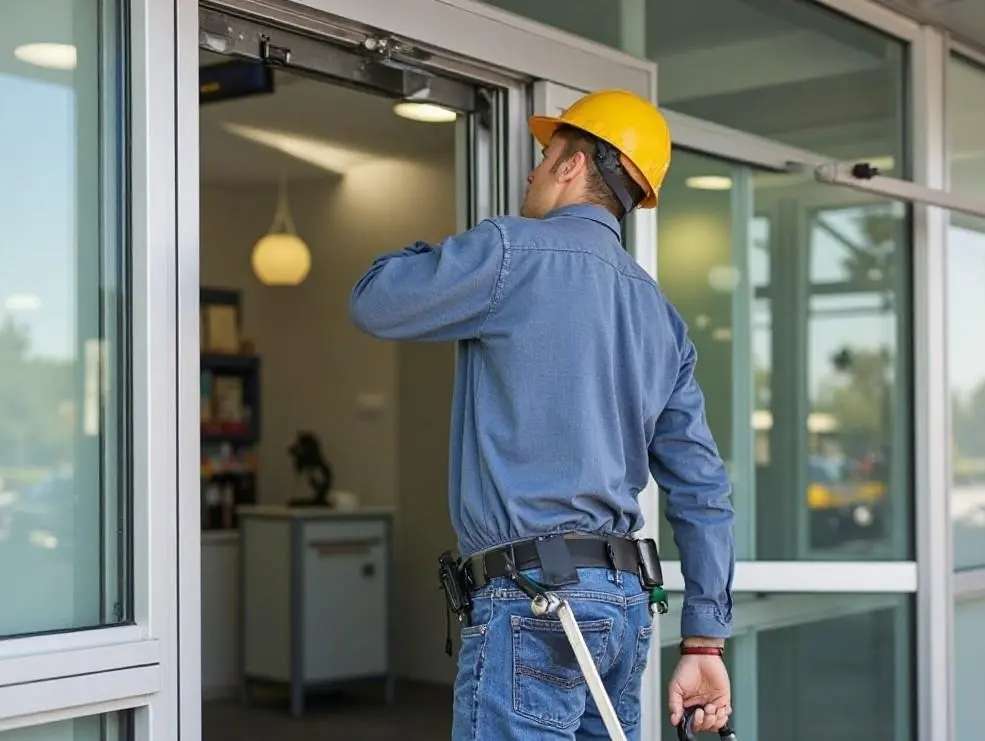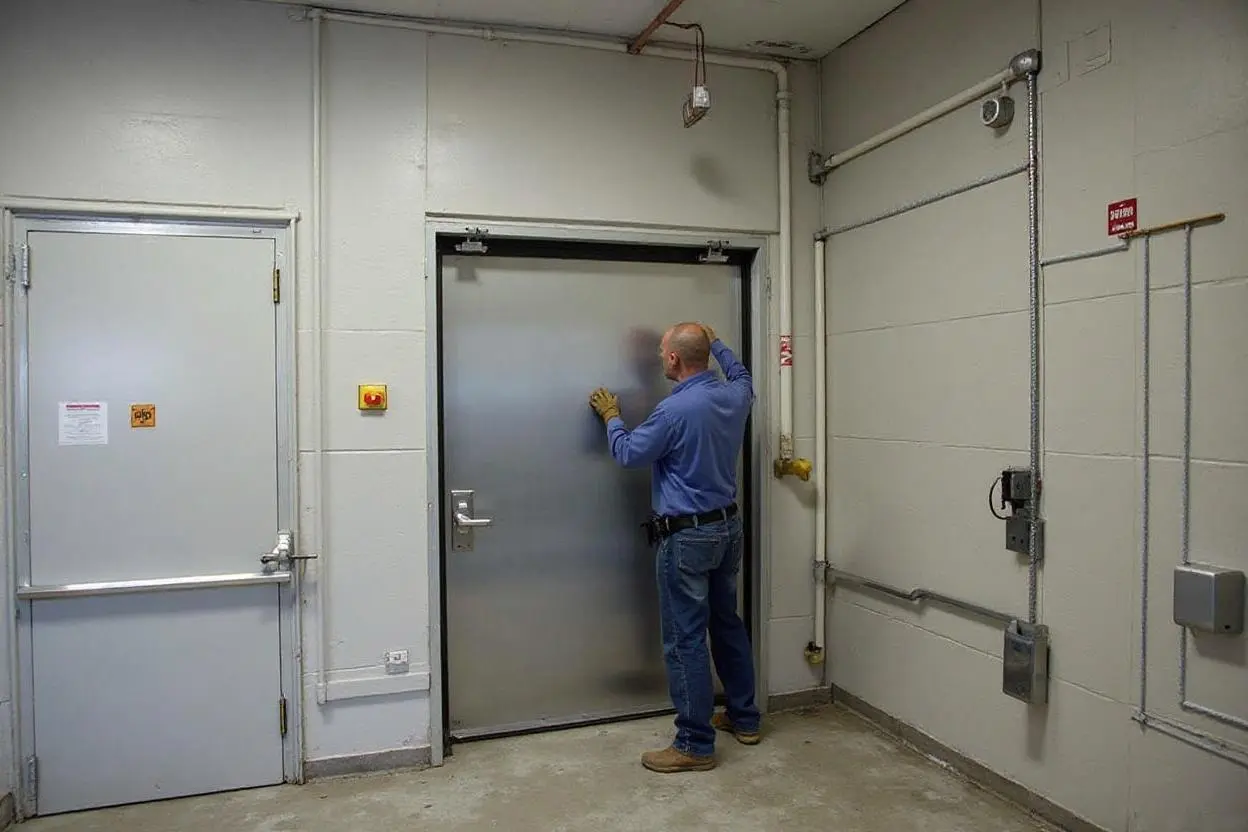Choosing OEM Parts for Reliable Automatic Door Repairs in Buffalo
Automatic sliding doors carry heavy traffic across Buffalo. On a winter Monday at a medical office in Amherst, or a busy retail entrance on Elmwood, a door that sticks or drifts open wastes heat, slows lines, and creates safety risks. The decision that determines whether that door goes back to smooth daily service often comes down to parts. OEM components keep systems aligned with the original design. That single choice reduces callbacks, downtime, and code headaches.
Why OEM parts matter more in Buffalo’s climate
Lake-effect winters punish door operators, rollers, and sensors. Ice, grit, and salt work into tracks. Temperature swings stress belts and gearboxes. OEM parts match the system’s tolerances, firmware, and wear patterns. That fit limits rattle and drag, which is critical in January when lubrication thickens and door timing grows less forgiving. In multi-tenant buildings downtown or near the Medical Campus, the building’s heat loss from a door that does not close to spec shows up on the utility bill. OEM seals and closing profiles cut that waste.
A property manager in North Buffalo recently called about a door that would not re-learn limits. A generic controller had replaced the original during a rush repair. The panel lacked the correct inputs for the presence sensor array, so the door “hunted” at the threshold and stalled. Swapping back to the manufacturer’s controller fixed the issue in under an hour. Labor aside, the real savings came from restoring dependable safety logic.

OEM vs. aftermarket: what changes in daily use
Aftermarket parts can look close. They may even run for a while. The difference shows up under load. Door operators rely on matched components: motor torque, drive belt pitch, carrier spacing, and sensor logic. OEM parts keep that chain intact. That consistency cuts vibration, which cuts noise. It also reduces micro-misalignments that force the operator to work harder and wear sooner.
Service teams in Buffalo track return visits by door type and part source. Across retail sites in Cheektowaga and West Seneca, doors repaired with OEM rollers and belts returned 30 to 40 percent less often within a year than those repaired with generic substitutes. That gap widens at sites with cart traffic and frequent snow intrusion.
Safety codes and liability
ANSI/BHMA A156.10 and A156.38 set performance and safety standards for automatic sliding doors. Many OEM sensors and controllers ship pre-configured to meet those standards with their own hardware. Mixing sensor brands and controllers often breaks tested safety zones. It might pass a quick walk test, then fail during a crowd surge.
If a customer trips or a door closes on a mobility device, claim investigators look for maintenance logs, part sources, and compliance test results. Facilities in Buffalo’s Theater District and hospitals near Main Street know the risk. OEM parts, installed and documented by a qualified shop, keep you on solid ground with insurers and AHJ inspections.
Energy and building performance
Buffalo’s heating season is long. A door stuck two inches open can dump thousands of BTUs per hour. OEM door closers, brush seals, and carriage assemblies keep panels aligned and fully seated. On a 20-foot storefront, a tight close can trim noticeable dollars from monthly bills. For LEED-minded owners or any site with tight energy targets, the small parts matter: correct seal profiles, track covers, and activation timing that does not hold-open longer than needed.
Parts that should always be OEM
Use judgment on cosmetic items, but some components repay OEM choice every time:
- Controllers and safety sensors: logic, wiring harnesses, and diagnostics must match for consistent behavior.
- Drive belts and pulleys: pitch and material affect motor load and door speed accuracy.
- Roller carriages: bearing quality and offset determine glide and panel sag over time.
- Gearboxes and motors: torque curves and thermal protection align with the door’s weight and duty cycle.
- Seals and end caps: small, but they drive energy loss and air/water intrusion in lake-effect storms.
The cost picture owners actually feel
Sticker price comparisons can mislead. A non-OEM belt might save 20 to 30 percent upfront. If it stretches and causes the door to slow or chatter, the operator compensates by drawing more current. That shows up as nuisance faults, callbacks, and earlier motor wear. A single extra service trip in the middle of a Friday rush on Niagara Street wipes out the savings. OEM parts pair with factory-level settings, so technicians can complete adjustments faster and make fewer return visits.
For multi-site operators in Tonawanda and Orchard Park, standardized OEM parts simplify van stock. That cuts wait times because technicians arrive with the right controller, the right belt, and the right sensor, rather than improvising with near-fit pieces.
Common Buffalo failure scenarios and OEM fixes
Salt in the track grinds down rollers. OEM carriages with sealed bearings resist contamination longer and keep their running profile. Ice heave at thresholds stresses belt tension. The correct OEM belt plus the specified tension range stops slippage and keeps learning cycles reliable. Doors exposed to wind gusts on the waterfront often drift open. OEM controllers with wind-load settings and matching presence sensors improve hold-closed without false trips. In older plazas across Kenmore, mixed-brand sensors cause intermittent safety stops; restoring the original sensor suite clears phantom detections.

How A-24 Hour Door National Inc handles automatic sliding doors repair in Buffalo
Local experience and correct parts solve problems quickly. The team services entrances across Buffalo and the nearby suburbs, 24 hours a day. The process is simple: diagnose with manufacturer-specific software and gauges, replace worn components with OEM parts on the first visit when possible, and validate performance with force and timing tests that match ANSI/BHMA standards. Technicians document before-and-after readings, including opening speed, closing force, and hold-open time, and leave owners with clear service notes.
Emergency repairs on Main Street storefronts, healthcare facilities in University Heights, and grocery entrances in North Buffalo follow the same principle: keep people moving, keep doors safe, and stop the problem from returning. Van inventory covers major brands common in Western New York, so most automatic sliding doors repair Buffalo calls wrap the same day.
Signs it is time to insist on OEM during your repair
- The door has recurring faults after recent non-OEM fixes.
- Sensors intermittently fail walk tests or hold the door open without traffic.
- Panels drift, scrape, or bounce during closing, especially in cold weather.
- Energy bills rise and the entry feels drafty despite recent service.
- The door fails annual inspection or staff report safety near-misses.
What to ask your door contractor
Owners and managers can keep the conversation clear and short. Ask for brand, model, and firmware of the controller, plus part numbers for belts, carriages, and sensors. Request documentation that the safety zones match ANSI requirements after the repair. Confirm warranty terms on both parts and labor. These points signal a repair that respects the original engineering and protects your liability.
Neighborhood notes: Buffalo entrances that benefit most
Busy retail in Elmwood Village sees heavy stroller and cart traffic; OEM rollers and proper guide profiles cut derailments. Medical offices in Amherst and Tonawanda run steady, gentle cycles; OEM sensors make approach speeds predictable for older patients. Industrial sites in Lackawanna need wind-load and dust resistance; OEM seals and correctly rated gearboxes hold up. Buildings near Canalside take gusts and blowing snow; OEM controllers with correct hold-closed curves keep panels seated.
Short-term downtime, long-term reliability
Every hour a main entrance is roped off costs real money and customer goodwill. OEM parts reduce diagnostic time and match settings the first try. That shortens downtime today. The bigger win is fewer surprises next month when the lake wind shifts or the temperature drops 40 degrees overnight. Reliable automatic doors keep customers moving and staff focused on their work, not on struggling with an entrance.
Ready for service today
For automatic sliding doors repair Buffalo facilities can trust, A-24 Hour Door National Inc is available day and night. The team arrives automatic doors with OEM parts, brand-specific tools, and the experience to get doors running smoothly in one visit whenever possible. Call to schedule a same-day repair, set up a preventive maintenance plan, or request an inspection across Buffalo, Amherst, Cheektowaga, Tonawanda, Orchard Park, or nearby suburbs. A short visit now can prevent a long outage when the snow hits.
A-24 Hour Door National Inc provides commercial and residential door repair in Buffalo, NY. Our technicians service and replace a wide range of entry systems, including automatic business doors, hollow metal frames, storefront entrances, fire-rated steel and wood doors, and both sectional and rolling steel garage doors. We’re available 24/7, including holidays, to deliver emergency repairs and keep your property secure. Our service trucks arrive fully stocked with hardware, tools, and replacement parts to minimize downtime and restore safe, reliable access. Whether you need a new door installed or fast repair to get your business back up and running, our team is ready to help. A-24 Hour Door National Inc
344 Sycamore St Phone: (716) 894-2000 Website: https://a24hour.biz/buffalo
Instagram: @a24hourdoor
Buffalo,
NY
14204,
USA
Facebook: 24 Hour Door
Yelp: A-24 Hour Door National (Buffalo)
X (Twitter): @a24hrdoor